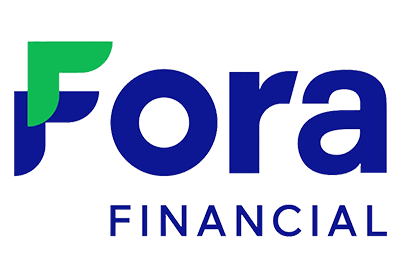Thinking about turning your passion for design and creativity into a business? Starting a small printing business might be your perfect canvas. From custom t-shirts and business cards to signage and promotional materials, the demand for personalized printing is alive and well, and full of opportunity for new entrepreneurs.
Whether you dream of running a home-based studio or opening a storefront, success starts with understanding the essentials. What services will you offer? What equipment makes sense for your goals? How much should you expect to invest? This beginner-friendly guide breaks down the basics, from startup costs to smart setup strategies, so you can confidently start your journey into the colorful world of printing.
What is a Printing Business?
A printing business provides customized printed materials for individuals and businesses. This can include business cards, flyers, banners, posters, T-shirts, and promotional products. Businesses rely on printing services for branding, advertising, and communication, while individuals seek them for personal projects like invitations and custom merchandise. With advancements in digital and screen printing technology, small printing businesses can operate from home or a dedicated shop, offering a range of services based on customer demand. The versatility of a printing business allows entrepreneurs to specialize in different areas, making it a flexible and profitable venture.
Equipment Needed for Printing Business
Printing Machine for Small Business
A reliable printing machine for small business is the backbone of any printing business. Depending on your services, you may need inkjet, laser, or direct-to-garment (DTG) printers. Inkjet printers are great for detailed and colorful prints, while laser printers offer speed and efficiency for high-volume jobs. DTG printers are ideal for printing on fabrics like T-shirts and hoodies. Investing in a high-quality printer ensures durability, precision, and customer satisfaction. The cost of a high-quality printer can range between several thousands to tens of thousands of dollars; double that if you’re considering running two machines for faster production. Because this is typically the biggest investment for this industry, many entrepreneurs opt to apply for a small business loan to get the machine(s) that performs to the level required for success.
Best Computer for Printing Business
A high-performance computer is essential for designing and processing print jobs. The best computer for printing business success will have a fast processor, plenty of RAM (Random Access Memory), and a high-resolution display to handle graphic design software efficiently. You'll need a high-quality computer because graphic design programs like Illustrator or Adobe Photoshop demand speedy processors. Additionally, having a dual-monitor setup can improve workflow efficiency, allowing you to design and preview prints simultaneously.
Heat Press Machine
Other equipment for printing may include a heat press machine if you're printing on T-shirts, mugs, or other heat-transfer materials. Heat press machines come in various sizes and styles, including clamshell, swing-away, and multifunctional models. Selecting the right heat press depends on your business focus and budget. A high-quality heat press ensures long-lasting and vibrant prints that won't fade or crack over time. Decent heat press machines start at around $500 and go up in the thousands, so consider short-term financing to get the machine you need without overextending your startup budget.
Cutting Tools
Paper cutters, vinyl cutters, and other trimming tools are needed to create clean and professional print products. Vinyl cutters are especially useful for sign-making and custom decals, while guillotine paper cutters provide precise cuts for business cards and brochures. Having the right cutting equipment enhances efficiency and ensures a polished final product for customers.
Design Software
Professional graphic design software, such as Adobe Photoshop or Canva, helps in creating high-quality designs for customers. These tools allow you to produce customized artwork, edit images, and format text with ease. Learning how to use design software efficiently is crucial for offering professional-grade print services that stand out in a competitive market.
How Much Does It Cost to Start a Small Printing Business?
The cost to start a small printing business varies based on the type of printing services offered. A home-based setup with basic equipment can start at around $2,000 to $5,000, covering essential items like a printer, computer, heat press, and design software.
A larger-scale business with industrial-grade equipment may require $10,000 or more, especially if investing in commercial printing machines and a dedicated workspace. Additional costs include supplies, marketing, and operational expenses such as rent, utilities, and labor. Budgeting wisely and starting with essential equipment can help minimize initial expenses while allowing room for expansion as your business grows.
Types of Printing Businesses
Digital Printing
Digital printing involves printing directly from a digital file. It’s ideal for short-run projects like business cards, brochures, and invitations. Unlike traditional printing methods, digital printing eliminates the need for printing plates, making it a cost-effective and fast solution for small businesses and individuals needing quick turnaround times.
Screen Printing
Screen printing is commonly used for clothing and promotional items. It requires stencils and ink to transfer designs onto surfaces. This method is known for producing high-quality, durable prints with vibrant colors, making it a popular choice for bulk orders of T-shirts, tote bags, and posters.
Sublimation Printing
Sublimation printing uses heat to transfer ink onto materials like mugs, T-shirts, and phone cases. This technique allows for full-color, long-lasting prints that don't peel or fade over time. Sublimation printing is particularly effective for custom merchandise and corporate branding items.
Flexographic Printing
Flexographic printing is used for large-scale production, such as packaging and labels. It requires specialized printing presses and is commonly used in the food, retail, and pharmaceutical industries. This method allows for the mass production of high-quality printed materials at a relatively low cost per unit.
Most Profitable Printing Business
The most profitable printing businesses include T-shirt printing, custom packaging, promotional products, and personalized home décor. These niches have high demand and allow for premium pricing. Businesses and consumers alike seek personalized prints for branding, gifts, and events, making these categories lucrative for entrepreneurs looking to maximize their earnings.
How to Start a Printing Business
Starting a small printing business requires careful planning. First, choose a niche and research your target market. Invest in the right equipment for printing, secure a business license, and set up an online or physical storefront. Build a solid website and social media streams to attract customers. Offering excellent customer service and competitive pricing can help you gain repeat clients and establish a solid reputation in the industry.
How to Start a Printing Business at Home
Launching a print business from home starts with carving out an adequate workspace that accommodates your home and work life. Then, invest in essential equipment. Next, choose a profitable niche, such as custom T-shirts or business cards. Don't forget social media and use smart marketing tactics to put your print business in front of potential customers. Most importantly, provide excellent customer service because it's the ultimate key to building a loyal client base. Endeavoring to learn how to start a printing business at home can prove beneficial in terms of offering more flexibility and lower overhead costs.
Final Thoughts & Takeaways
Starting a small printing business can be a rewarding venture with the right equipment and strategy. Whether you set up a home-based operation or a full-scale print shop, focus on quality, customer service, and marketing to grow your business. By identifying a profitable niche, investing in essential tools, and leveraging digital marketing, your printing business can become a profitable and sustainable endeavor.





